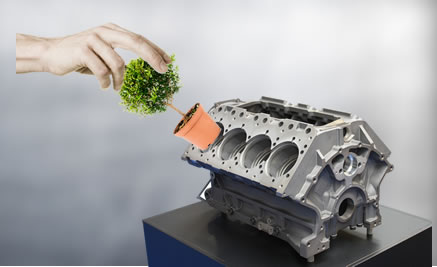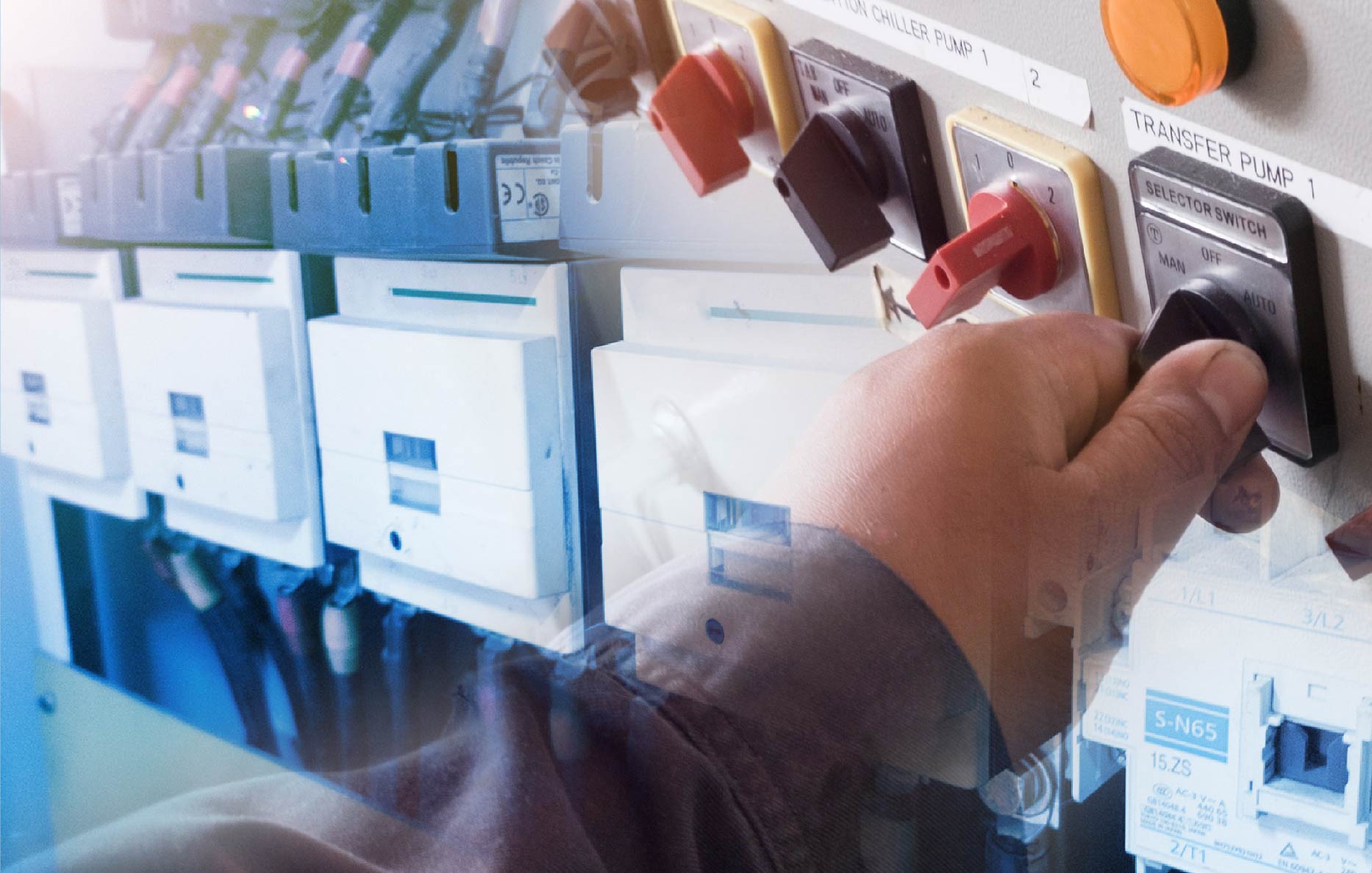Wastes and pollutions are very common for all kinds of industrial factories.They come from raw materials and from the manufacturing processes. As the manufacturing technology advancement is moving with the fast pace, its negative effects are not sufficiently paid attention to. The Map Ta Phut case had a profoundly big impact on industrialists and marked a turning point for the manufacturing sector in Thailand The problem should not in any way be overlooked. One of the interesting concepts for creating such consciousness for every sector is the green factories.
Green Concept
There are some organizations that have clearly defined the green concept. For example, the Ministry of industry define Green industry as the manufacturing firm that commits to conducting business in an environmental friendly and socially responsible way to achieve sustainable growth by continuously developing and improving their production process and environmental management system The United Nations Environment Program (UNEP) defines green economy as an economy that results in improved human well-being and social equity,while reduces environmental and ecological impact. As mentioned, green factory concerns three elements, first the factory itself, second,the environment, and lastly the community.Thus, for the businesses that desire to grow susinably, they need to consider the effects that might have on the environment and communities. As for Honda (Japan), Green Factory means the factory that minimizes waste generation by maximizing resource efficiency and continually improves towards zero waste. Honda has many initiatives to reduce energy consumption and CO emission.
 Global Trends
Global Trends
Global warming problem increases rapidly during the last century. Many countries are now working to reduce this environmental impact which over 90% caused by greenhouse gases from coals and fossil-fueled energy as well as the deforestation that disrupt the balance of nature.With the help from an international organization such as the United Nations Industrial Development Organization (UNIDO) who came up with the Green Industry initiatives to help developing countries to maintain resource-efficient low-carbon growth as well as creating new jobs while protecting the environment. The initiatives also provide developing countries with access to cleaner technologies and better implementation of environmental agreements by offering services and expertise for more sustainable manufacturing. The United States, one of the highest energy consumed countries, has launched a national initiative called the UCS Blueprint 2030. The plan is aimed to increase the energy efficiency in buildings for households,businesses, and factories. The country is also aiming to stop using fossil fuel by the year 2030 and move toward renewable energies.The European Union (EU) on the other hand,has launched an initiative called EMC Factory that aims to reduce the impacts on overall resources consumption but at the same time generating wealth and employment for economic growth. This plan focuses on better energy and resources efficiency in the production of automotive, aerospace, and rail through technological improvement in manufacturing process as well as design and green factory management.
How to Go Green
Achieving green factories requires high level of commitment. Manufacturers need to have the right knowledge and attitude. In general factories can do one of these two ways to adopt the green factories concept. First, they can advance their quality management system with the environmental and safety policy throughout the supply chains. Second, they can seek supports and subsidized projects initiated by government sector such as the Ministry of Industry. Thailand, following the Johannesburg Declaration in 2002 and the Manila Declaration in 2009, has defined a strategy to develop the manufacturing sector. The Ministry of Industry created a Green Industry project that aimed to be the guideline for green factories. The project comprised of five levels; Green commitment, green operation, green system, green culture, and green network. The project covers from creating the awareness of reducing the environmental impact, implementation, certifying the environment management system, to network extension of practice throughout the supply chains. The project guideline practices include the minimization of the environmental impact, the prevention of pollutions, the resource efficiency, the reduction of climate change, and the protection and restoration of theeco-system.One of the success stories according to UNEP’s green economy initiative in a developing country is China with the promotion of renewable energy such as wind power and solar power. The Chinese government has implemented renewable energy legislation in 2005-2010 offering a variety of financial incentives and tax privilege. China has become the biggest manufacturer of solar cells (PV) with 45% market share of the world’s total output. In 2009, China’s revenue from the energy industry was at 17 billion dollars. This policy also helps to create more than 1.5 million jobs. For our country, the good role model is Siam Cement Group, who was awarded the world’s most sustainable business from Dow Jones Sustainability Indexes (DJSI) in the building materials category.
Benefi ts of Being Green
Green factory practice has mutual benefit for all parties; manufacturers, employees,community and the environment. The first and foremost benefit is that it helps to reduce the use of resources and energy in the production process, which directly lowers operating costs. Another benefit is that they often discover room for products and service quality improvements. The by-product benefit is that manufacturers can use the Green Industry mark for added commercial value as well. Employees also benefit from this by having a better and safer workplace. For the community, the practice fosters more open dialogue between factories and community, thus creating a better understanding and a balanced benefit between the two. Last but not least, it can help preserve natural resources for next generations.
Current Status of Green Industry in Thailand
The Ministry of Industry has been spearheading a move toward green manufacturing by encouraging related sectors to work together in the development of green industry by integrating environmental projects within the ministry. Now, there are 3,681 factories certified for green industry: 1,619 factories at level 1,870 factories at level 2,1,162 factories at level 3 and 30 factories at level 4. Many more factories are under the assessment process. (Currently, there is no factory classified at level 5.) The Ministry of Industry aims to increase the number of green factories to 70,000, or 50% of the total factories by the year 2015. Though the number of certified factories is still low, the ministry believes that the movement will drive more and more manufacturers to join the program in the near future. Also, with more factories certified ISO I4001 standard, the ministry is very optimistic about the success of the program in the coming future.
 Challenges for Green Factories
Challenges for Green Factories
Nevertheless, there are still obstacles on the road to green industries. The main problems are a lack of understanding of the green economy. Manufacturers often see green manufacturing as a no return investment.In fact, studies from many internationally recognized organizations and the United Nations have confirmed the benefits and cost-savings from green manufacturing that would lead to sustainable growth. Other problems include regulations and incentive schemes such as an annual fee or tax exemption, which involve different government agencies approval. Anotherchallenge lies in the fact that some manufacturers still misunderstand about the objective of the project, while some join the program only expecting the privilege rather than the benefits from realizing green operations.
Conclusion
By relying on manufacturing sector as an important economic growth driver, Thailand has no choice but to develop the manufacturing sector in a sustainable way without harming the environment society. Green manufacturing is a mission, which is well beyond creating good public images or superficial CSR that a lot of companies are undertaking. The most important thing now is to instill in the manufacturing sector that only with green manufacturing will they achieve sustainable growth.








